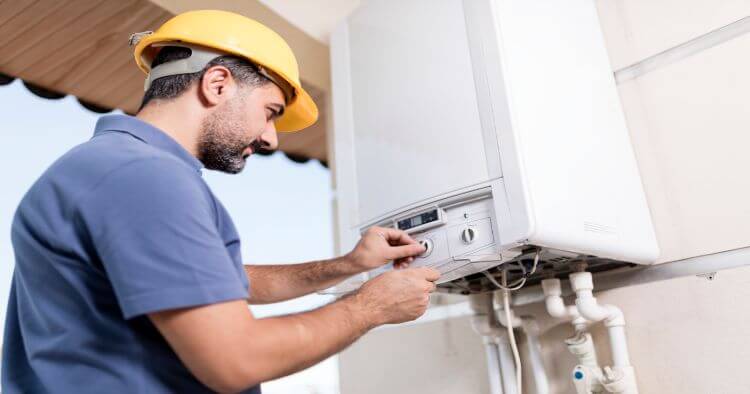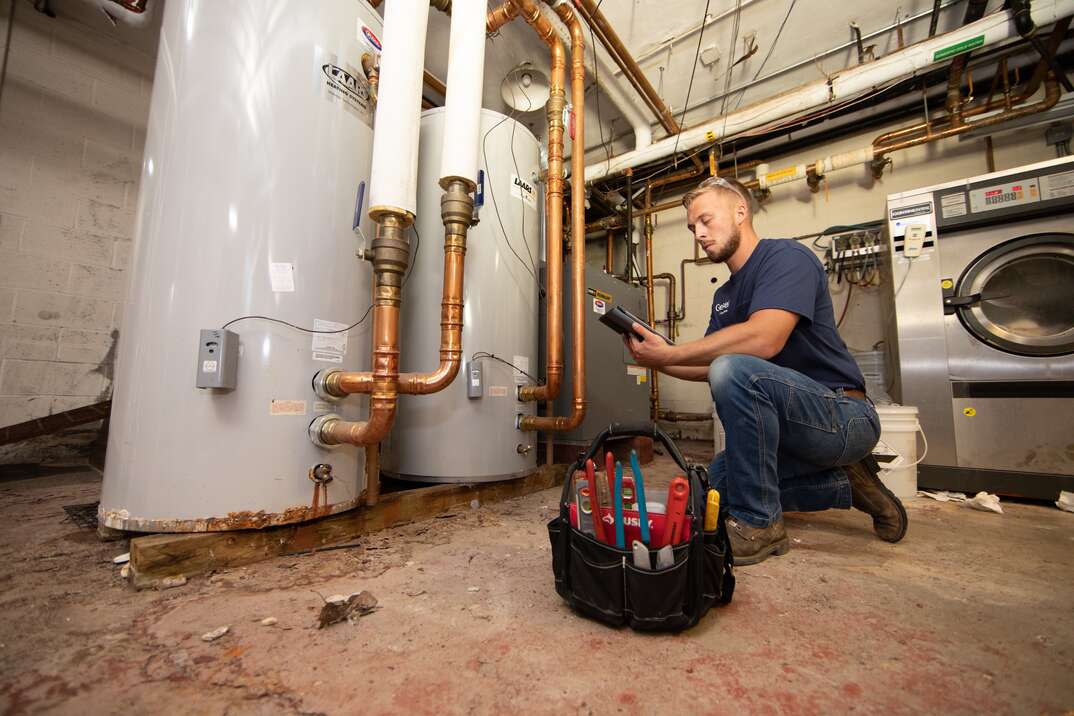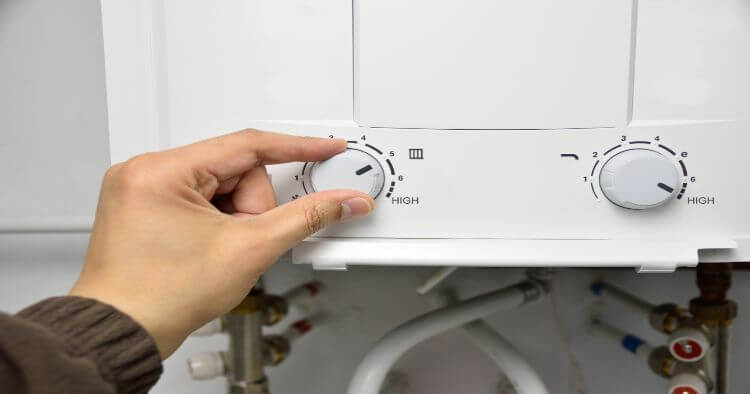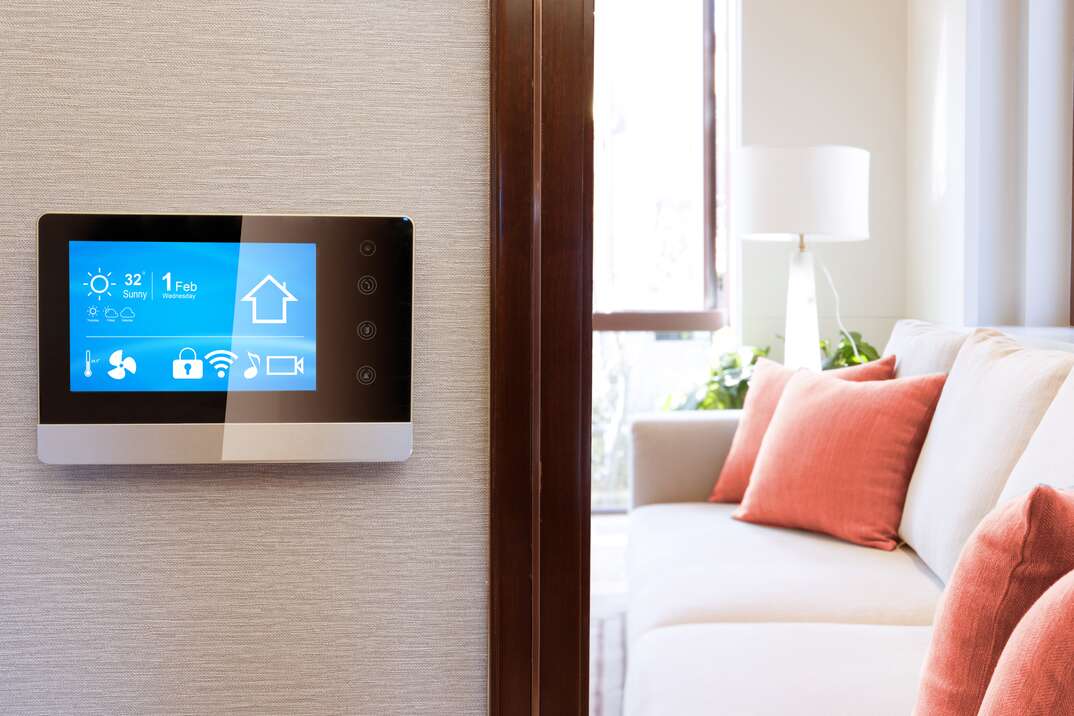Everything to know about Boilers

I'm definitely one for cozying up with a few blankets and a hot cup of tea when I get home. But what I love even more is turning up the heat to take the chill out of the air during the colder seasons. From the dead of winter to the frosty weeks of early spring, I rely on my home’s heating system and boiler to keep me warm.
[1]:
[2]: /en-us/assets/images/blog/HomeServe-CTAsAvailablePlan.jpg
[3]: /en-us/assets/images/blog/HomeServe-CTAsViewPlan.jpg
[![HomeServeAvailablePlan][2]][1]
But what is a boiler — and how exactly does a boiler system work? What’s the best way to keep it up and running? Keep reading to learn all more about the boiler-based heating system in your home.
What Is a Boiler?
A boiler is a component of a home’s radiant heating system. It’s just one of the ways to put the “H” into a home’s HVAC system — the heating, ventilation, and air conditioning system. It is essentially an appliance that heats up water and sends the heated water or steam throughout pipes and radiators to keep a space warm.
Boilers are usually located in the basement. They’re especially common in historic properties and colder climates. A boiler’s central location and ability to evenly spread heat throughout a home mean it can be a key part of a central heating system — but not every home has a boiler. Only properties with hot water radiators or steam radiators will be heated by boilers. If your home has air registers on the floors, walls or ceilings, you probably have a furnace instead.
Larger, more powerful boilers are also used in industrial settings — not only as a source of heat but also as steam generators to power machinery.
What is the difference between a Furnace and a Boiler?
Homes can be centrally heated in a few different ways. “Central heating” simply refers to the fact that there is one whole-home system warming up all of the rooms. This is contrasted with “distributed heating” methods such as space heaters, locally-controlled baseboard heaters and fireplaces which are designed to heat one room at a time.
Here’s a quick overview of how furnaces and boilers work in different central heating systems:
- With an electric furnace, air passes across electrically heated coils before blowing out through registers throughout your home.
- With a gas furnace, air passes across heat exchangers before blowing out through registers throughout your home.
- With a boiler, water is heated by either an electric or gas heat source, then the hot water or steam circulates inside radiators throughout your home.
As you can see, furnaces push warm air into each room to raise the temperature indoors. Boilers, on the other hand, circulate either hot water or steam through radiators which literally radiate heat to warm up the room.
What is the difference between a Water Heater and a Boiler?
Boilers are also sometimes confused with hot water heaters, which isn’t surprising given the similar components. But these two appliances have very different purposes.
Like boilers, water heaters circulate hot water throughout the home, but this water flows out from taps, tubs and showerheads. It’s also potable, meaning it’s safe to drink. The water and steam that comes out of a boiler never mix with the water you use in the kitchen or bathroom; they are locked within the radiant heat system.
However, some boilers actually provide the heat source for water heaters which is why you might see the two types of appliances connected.
How does a Boiler work?
We’ve already established that boilers heat homes using hot water or steam. But how exactly do they do this?
Depending on the type of boiler you have, a fuel source such as propane, oil or natural gas will burn inside an insulated chamber, heating up coils of the heat exchanger. Cold water passes through these coils and warms up. What happens next depends on whether your home has steam radiators or hot water radiators.
For hot water heaters, the circulator pump near the side of the boiler will turn on when the thermostat setting requires it, pushing the heated water through pipes and out to the radiators throughout your home. The heat will transfer from the water to the metal components of the radiator and will radiate throughout each room. Modern systems will be zoned so different spaces can be controlled independently. The water will cool off as it moves through the system, and will return to the boiler where it will get reheated.
Steam radiator systems are simpler because they don’t require a circulating pump. Instead, they rely on the “hot air rises” principle. The water steam simply rises through the system to radiators located on the upper floors and cooled-off condensation drips back down through the pipes to get reheated.
As boilers rely on radiant heat instead of blowing hot air into rooms, the result is typically a more consistent and cozy heat.
What are the different types of Boilers?
Gas-fired boilers run on natural gas or propane, while oil-fired boilers serve as an alternative in areas where homeowners have limited access to natural gas. Electric boilers can be more efficient than both options, but operating costs are often much higher.
In a traditional non-condensing boiler, an exhaust flue will help regulate the high pressure that builds up within the system. But for increased energy efficiency, a condensing boiler has a second heat exchanger. This highly efficient boiler design recycles condensation and flue gases back into the system, wasting less heat in the process. It also preheats cold water as it enters the boiler, allowing the appliance to operate at a lower temperature.
Cast iron boilers are known for their durability and longevity but may not be as efficient as high-efficiency boilers.
In a water-tube boiler, the water is pushed through tubes that are exposed to the fuel source, whereas in a fire-tube boiler, water flows around tubes filled with heated gas.
A sealed-combustion boiler will direct exhaust gases outside rather than through the chimney, which is also much more efficient than non-sealed versions and doesn’t expose your home’s interior spaces to exhaust.
How much does a Boiler cost?
The price of a boiler and installation services will vary depending on the boiler size, brand, type and retailer as well as the existing system in your home. While boilers are more expensive up-front than furnaces, they often save homeowners money in the long run with lower operating costs.
Home Depot sells boilers for as low as $1,500 but also offers models that exceed $5,000. Angie’s List notes that the average cost for a new appliance and labor can fall between $3,300 and $7,350.
How do you know if your Boiler is operating efficiently?
The Federal Trade Commission requires every boiler to have an annual fuel utilization efficiency (AFUE) score. This is the measure of how efficient the unit is at converting energy into heat.
Modern boiler systems can have efficiencies as high as 98.5%, according to Consumer Reports. Consider purchasing ENERGY STAR certified boilers, as they’re guaranteed to have an AFUE rating of at least 87% for oil-fired models and 90% for gas boilers.
Homeowners can also retrofit existing boilers to boost their efficiency, which can include anything from switching the fuel source to installing programmable thermostats. However, the Department of Energy advises weighing the costs of hefty retrofits with the price of a new boiler.
Consumer Reports estimates a 15- to 30-year lifespan for most boilers, but you can always extend the life of your HVAC system with regular maintenance. While a DIY home heating check-up can help, boilers also require annual servicing by a certified professional.
Be prepared with a Home Warranty Plan
The last thing you want is to be stuck without heat when it’s cold outside. Now that we’ve covered “What is a boiler?” and other heating systems questions, find out how being prepared with plans from HomeServe can help with the costs of covered repairs.
[![HomeServeViewPlan][3]][1]


